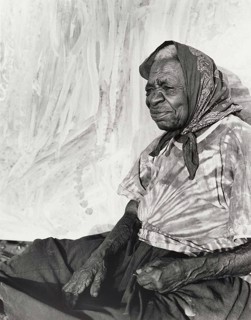Emily Kame Kngwarreye
Select Works Archive (Currently Unavailable)

Emily Kame Kngwarreye
Circa 1910 - 1996
Emily Kame Kngwarreye remains one of Australia’s most celebrated artists. Her groundbreaking paintings altered the perception of Aboriginal Art. Emily's work bridged a gap between traditional Australian Aboriginal Art and Western Abstract Expressionism and embedded desert art firmly into the realm of contemporary art. Characterized by shimmering fields of dots, raw stripes, and elegant lines, Kngwarreye’s paintings stunned viewers with her abstract imagery of her country. Kngwarreye was born in 1910 in the Utopia region of Australia's central desert and would pursue art late in her life. As one of the founding members of the Utopia Women’s Batik Group, she converted her decades-long experience of painting in a ceremonial context to painting on canvas. In 1988, she was part of a group art project using acrylic paint on canvas, inspiring her to experiment further with painting using modern material. Further encouraged by her niece Barbara Weir, Emily's rise in the art world was swift. Emily seemingly became an artist of great national and international standing almost overnight at around 80 years of age. In the early 1990s, she developed her painting technique to embody the explosive yet ordered rhythms of the natural world. Initially, her art practice illustrated sacred themes through canvases filled with fluid dots, blobs, and color. Later in her career, she embraced austerely striped and linear compositions. And towards the end of her life, her art utilized gestural and blocky abstracted forms. The artist’s culture, life as an Anmatyerre elder, and her lifelong custodianship of her clan’s women dreaming sites heavily influenced and informed her work. Her art focused on representing her community. Her paintings often alluded to her kinship ties, ancestral history, and law. Additionally, Alhalkere, her country, was her primary source of creativity and inspiration. Characterized by shimmering fields of dots, raw stripes, and elegant black lines, Kngwarreye’s paintings initially stunned viewers due to her intense viewpoint of the country’s landscape. Kngwarreye’s first canvas, Emu Woman, garnered her significant attention and created a high demand for her work. Throughout her career she was very prolific as she painted over 3,000 works, approximately completing one work per day of a short 10 year art career. In 1992, Kngwarreye was the first Indigenous artist recipient of the Australian Artists Creative Fellowship. Today, every state gallery in Australia holds her work in their permanent collections and her art can be found in galleries worldwide. In 2017, Emily's Earths Creation sold for 2.1 million dollars at auction - the highest price ever for an Australian female artist - firmly establishing her permanent place as an icon of Australian art. International interest has surged in recent years with increased exposure and annual Sotheby's Aboriginal Art auctions showing very strong price growth year on year. Kngwarreye passed away in 1996. Her lyrical, vibrant abstarct depictions of Alhalkere will forever remain an important cultural legacy to the world.
Fill in the form below to stay up to date with new works and exhibitions by this artist.
